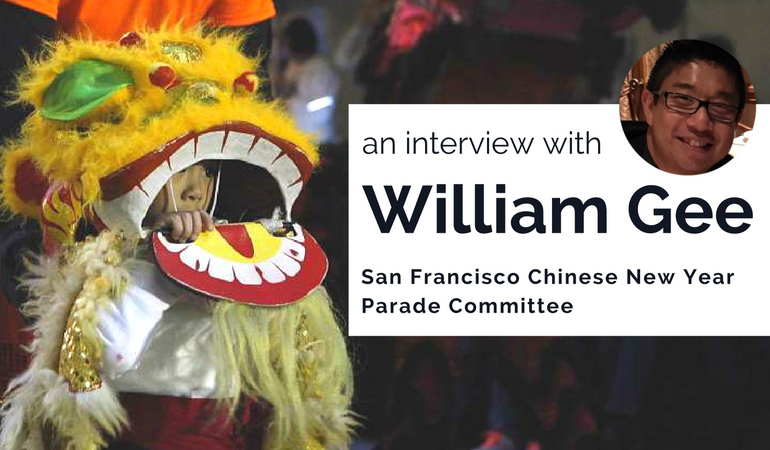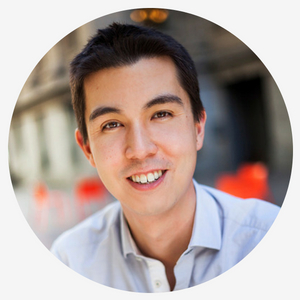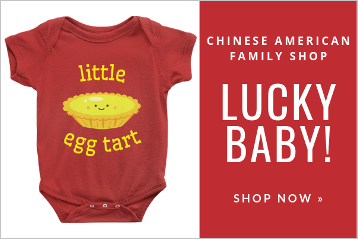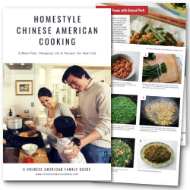This article is part of our Chinese New Year Family Guide. Sign up for our newsletter to receive family-friendly activity, recipe and craft ideas throughout the year!
Elaborate floats, beautiful costumes and energetic dancers welcome thousands of families among the crowd each year at the San Francisco Chinese New Year Parade. Named one of the Top Ten Parades in the World by IFEA, San Francisco’s annual downtown parade is perhaps the best known Chinese New Year celebration in the United States.
I recently chatted with William Gee, community liaison for the San Francisco Chinese New Year Parade Committee, seeking tips to help families attending the parade get the most out of the experience. He generously shared insights that can help you put the celebration into cultural and historical context for your kids, whether your family attends the San Francisco parade or another elsewhere in America.
The Southwest Airlines® Chinese New Year Parade returns to San Francisco on February 11, 2017, to welcome the Year of the Rooster. The parade is the culmination of two weeks of events celebrating Chinese New Year including a flower market, basketball jamboree, community street fair and the Miss Chinatown U.S.A. pageant.
William shared his perspective from nearly two decades of involvement with the San Francisco Chinese New Year Parade. He talks about the parade’s origins, the event’s evolution alongside the growth of the Chinese American community and the importance of getting the next generation involved. These are edited excepts from our conversation.
What makes this parade special and unique to San Francisco?
The parade has grown significantly since its inception during the Gold Rush days in the 1850s, when Chinese immigrants started arriving in San Francisco. As the decade went by, there were more and more Chinese here who were eager and anxious to share their culture with others. They showcased their culture in the American tradition with a parade — nothing like that had ever been done in China at that time. It was a grassroots effort in San Francisco. They marched down what is now Grant Avenue and Kearny Street carrying flags, banners, lanterns and drums, while lighting firecrackers to keep evil spirits away, much like what we still do now.
What are the timeless elements of the parade? What’s new for this year?
The timeless elements are the common themes in Chinese culture, such as wearing the color red and the symbolism of Chinese characters meaning “prosperity” and “blessings.” A lot of those traditions still ring true today. What is new, though, is the addition of technology and younger, stronger people. Take the golden dragon at the end of the parade, for example. It’s a lighted 268’ dragon that requires a lot of people to make sure it moves fluidly with lifelike motions that capture the essence of what a dragon is supposed to represent for the Chinese people.
What parts of the parade do you most forward to? What special childhood memories do you have from this parade?
I look for the units with younger kids to see what Chinese culture means to them, how they interpret the traditions and represent them to other people who may be curious or unfamiliar. I’m also interested in a lot of the traditional units such as the lion dancing or folk dancing. From my own childhood, I remember being part of the Chinese American club in high school and being responsible for making sure the Eight Immortals were active and cheerful to get a big rise out of the attendees. It was an opportunity to be part of a big community event to share Chinese culture with everyone.
What advice do you have for families attending with young kids?
We’re incorporating a lot of diversity and multicultural teams in the parade, including schools and bands from the San Francisco area performing dances, music, songs and martial arts like tai chi or kung fu. It’s definitely become a community-driven event in which the younger generation is upholding the traditions of Chinese culture and demonstrating them to all the attendees that come to the parade.
There probably isn’t a bad spot along the entire parade route because all the units perform as they march. I would arrive early to get a space right at the front by the barricades, so that kids don’t have taller people blocking their view. We also have bleacher tickets available that might make for a more comfortable experience. Kids will probably most enjoy the float designs, the dancers, the performing artists and the dragon at the end of the parade.
You mentioned the many youth groups participating in the parade. Why is it so important for them to be involved?
I think it’s important for them to gain a sense of community. To be the center of attention while demonstrating what Chinese culture is all about, it’s an experience like no other. They’re expressing what they understand about Chinese culture as children growing up in the Chinese American community. It’s what has been passed down to them from their parents or maybe even their great grandparents. So, it’s more than just performing, it’s understanding the background stories, the legends and the folk tales behind the zodiac animals, Chinese symbols and traditions like eating fish and dumplings at New Year.
How has the spread of the Chinese American community from San Francisco across the Bay Area changed the nature of the parade?
It’s been positive. Many Chinese American families now living in suburban communities have the same desire to share Chinese culture that the original immigrants had 150 years ago when they first produced the parade. In terms of ticket sales, I’ve had requests from Florida, up-and-down the east coast, to southern Texas. Even our Miss Chinatown U.S.A. pageant has become a national affair. The parade is an opportunity to share cultural experiences and provides a platform to demonstrate leadership and confidence across the country.
How has the parade evolved as the Chinese American community has grown to include more people from Taiwan and mainland China?
We are trying to open the parade up to be an international platform demonstrating a full range of Chinese arts and culture. For example, this year we’re bring back Kà from Cirque du Soleil, which is known for having Chinese performers from many different provinces in China. We also have an arts troupe from Jiangsu Province coming to participate. As we evolve from year to year, we’re incorporating many more of the native elements of Chinese art from the mainland, Taiwan, Macau and Hong Kong.
As the Chinese American community grows and changes, what is the role of younger generations to get involved and refresh the parade?
There’s an adage that, “You don’t really know where you’re going until you know where you’ve been.” It’s an awareness of how far we’ve come as a community. The biggest thing I can say is for the younger generation to preserve that culture, that historical knowledge, and use it to drive future generations to become leaders and to represent themselves well. Know where they come from and how they got here, so that they can continue to give back to society and contribute to their community. Be one of the many Chinese Americans who have made a difference for their generation and for future generations.
###
Your turn! Will your family be attending a Chinese New Year parade this year? What are your favorite parts of the parade to spot?





Ken Wu
Nice and informative interview. More on the history of the San Francisco Chinese New Year’s parade: http://www.sfgate.com/bayarea/article/In-1953-outsiders-invited-to-SF-Chinese-New-10862478.php
Wes Radez
Thanks for adding this article, Ken. Cool b/w video of old Chinatown in there, too. ~Wes